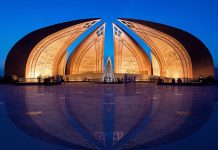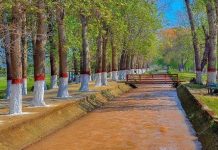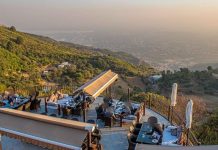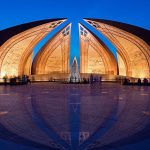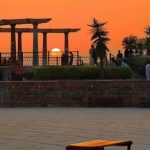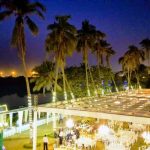The northern areas of Pakistan are beautiful and mountainous region that is rich in culture and natural resources. The region includes the Gilgit-Baltistan and Khyber Pakhtunkhwa provinces and is home to some of the highest peaks in the world, including K2, the second-highest mountain in the world.
The northern areas of Pakistan are popular tourist destinations due to their stunning natural beauty and cultural heritage. Visitors can enjoy trekking, mountaineering, skiing, and exploring the region’s rich history and diverse cultural traditions.
The people of the northern areas are ethnically diverse, with a mix of Indo-Aryan, Tibetan, and Central Asian influences. They speak a variety of languages, including Urdu, English, Shina, and Balti.
However, the region faces several challenges, including poverty, lack of infrastructure, and limited access to basic services such as healthcare and education. Political instability and conflicts with neighboring countries have also had an impact on the region’s development and security.
The northern areas of Pakistan are known for their breathtaking natural beauty and are popular destinations for tourists.
Here are some of the best places to visit in the northern areas of Pakistan:
Hunza Valley:
The Hunza Valley is a mountainous valley in the Gilgit-Baltistan region of Pakistan, located at an altitude of around 2,500 meters (8,200 feet) above sea level.
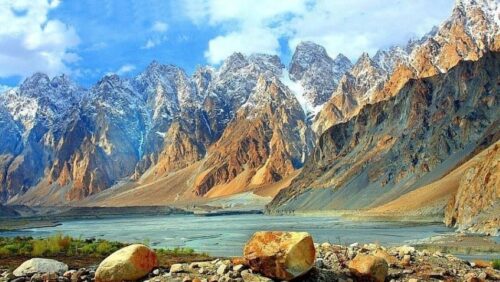
It is known for its stunning natural beauty, with snow-capped peaks, green meadows, and crystal-clear streams. The valley is also famous for the longevity of its inhabitants, who are said to live exceptionally long and healthy lives. The Hunza Valley is home to several ethnic groups, including the Burusho people, who are believed to be descendants of Alexander the Great’s army. The valley is also known for its traditional architecture, with many of its buildings made of stone and wood. Tourism is an important industry in the Hunza Valley, with visitors attracted by its scenic beauty, cultural heritage, and outdoor activities such as trekking and mountaineering. Some popular tourist destinations in the valley include the Baltit Fort, the Altit Fort, and the Attabad Lake. Known for its scenic beauty and picturesque landscape, Hunza Valley is a must-visit destination in northern Pakistan.
Skardu:
A gateway to the world-famous K2 Mountain, Skardu is a beautiful valley located in the Gilgit-Baltistan region.
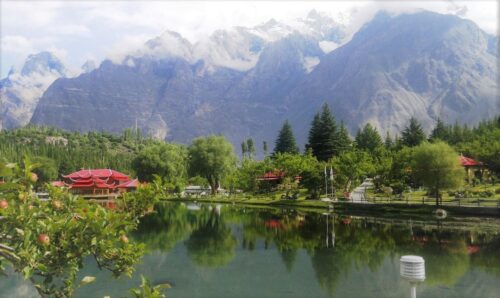
Skardu is a town in the Gilgit-Baltistan region of Pakistan. It is located in the northeast of Pakistan and is the capital of the Skardu District. Skardu is situated at an altitude of 2,438 meters (7,999 feet) above sea level and is surrounded by the Karakoram Mountains, including some of the world’s highest peaks such as K2 and Broad Peak.
Skardu is a popular tourist destination, known for its scenic beauty and adventure tourism opportunities. It is a gateway to the Karakoram mountain range and many expeditions to K2 and other peaks start from Skardu. The town is also known for its traditional architecture, historical sites, and cultural heritage.
The people of Skardu mainly speak Balti, a language that is similar to Tibetan. The local economy is mainly based on tourism, agriculture, and livestock farming. The best time to visit Skardu is from April to October when the weather is mild and the skies are clear.
Gilgit:
The capital of Gilgit-Baltistan, Gilgit is a hub of cultural activity and offers some stunning natural vistas.
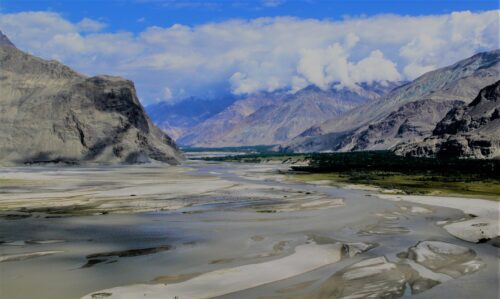
Gilgit-Baltistan is a region in the northernmost part of Pakistan, bordering Afghanistan, China, and India. It was formerly known as the Northern Areas and was officially declared the fifth province of Pakistan in 2020.
The region is known for its stunning natural beauty, including majestic mountains, crystal clear lakes, and vast glaciers. Some of the famous tourist attractions in Gilgit-Baltistan include the Karakoram Highway, the Hunza Valley, and the Baltoro Glacier. The region is also home to many diverse ethnic and linguistic groups, including Shina, Burusho, Wakhi, and Balti.
Gilgit-Baltistan has a rich cultural heritage, with a history dating back to ancient times. The region has been a crossroads of trade and cultural exchange between Central Asia, South Asia, and China for centuries, and has thus been influenced by various cultures. The people of Gilgit-Baltistan are known for their hospitality, and the region is often referred to as the “land of hospitality.”
Naltar Valley:
Naltar Valley is known for its crystal-clear blue waters and pine forests. Naltar Valley is a beautiful valley located in the Gilgit-Baltistan region of Pakistan.
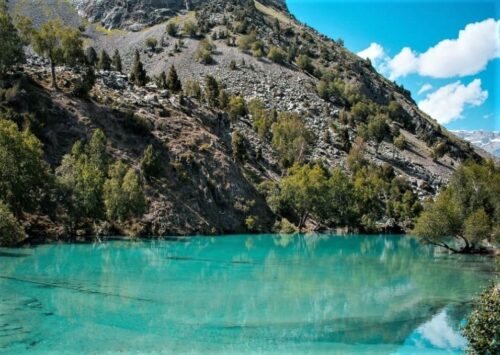
It is situated approximately 40 kilometers away from Gilgit city and is known for its scenic beauty, lush green forests, and crystal-clear lakes. The valley is also famous for its ski resort, which attracts many tourists during the winter season. Naltar Valley is home to some of the highest peaks in the region, including the Naltar Peak, which rises to an elevation of 7,126 meters. The valley is also known for its wildlife, including snow leopards, Himalayan ibexes, and brown bears. The valley is accessible via a well-maintained road from Gilgit city, and visitors can also arrange for jeeps or other transport to take them into the valley. Naltar Valley is a popular destination for tourists who want to enjoy scenic beauty and outdoor activities such as hiking, skiing, and camping.
Khunjerab Pass:
Situated at an altitude of 4,693 meters above sea level, Khunjerab Pass is one of the highest international border crossings in the world.
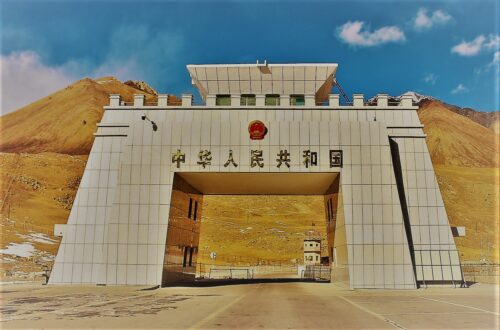
The Khunjerab Pass is a high mountain pass located in the Karakoram Range, at an altitude of 4,693 meters (15,397 feet) above sea level. It is situated on the border between Pakistan and China and connects the Pakistani region of Gilgit-Baltistan with China’s Xinjiang province
The Khunjerab Pass is considered to be one of the highest border crossings in the world and is an important part of the Karakoram Highway, which connects China and Pakistan. It is also one of the most scenic and beautiful routes in the world, offering stunning views of the surrounding mountains and valleys.
Due to its high altitude, the Khunjerab Pass is only open for a few months each year, usually from May to October, and can be closed due to heavy snowfall or other adverse weather conditions. Despite its challenges, it remains an important trade route and a popular destination for tourists and adventurers alike.
Fairy Meadows:
Located at the foot of Nanga Parbat, Fairy Meadows is a lush green meadow offering spectacular views of the surrounding mountains.
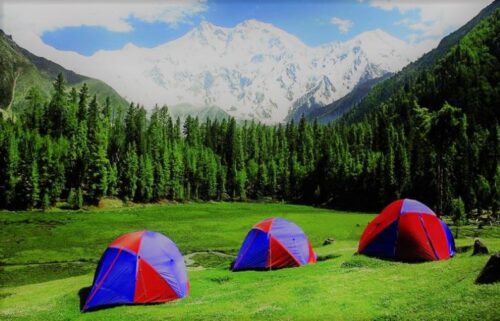
Fairy Meadows is a beautiful alpine meadow located at an altitude of 3,300 meters in the Diamer District of Gilgit-Baltistan, Pakistan. It is situated at the base of Nanga Parbat, which is the ninth-highest mountain in the world.
Fairy Meadows is a popular tourist destination because of its stunning natural beauty, peaceful environment, and its proximity to the majestic Nanga Parbat. The meadow is accessible via a 3-hour jeep ride from the town of Raikot Bridge, followed by a 3-hour hike. Along the way, visitors can enjoy breathtaking views of the surrounding mountains, glaciers, and valleys.
The name “Fairy Meadows” comes from the ethereal beauty of the place, which is said to be inhabited by fairies. The meadow is also known as “Joot,” which means “wildflower meadow” in the local language. Visitors to Fairy Meadows can enjoy a variety of activities, such as hiking, camping, and photography. The meadow is also a popular base camp for climbers attempting to summit Nanga Parbat. However, it is important to note that the area is remote and lacks basic facilities, so visitors need to be prepared for a rugged and adventurous experience.
Shandur Pass:
A high mountain pass located at an altitude of 3,700 meters, Shandur Pass is famous for its annual polo festival.
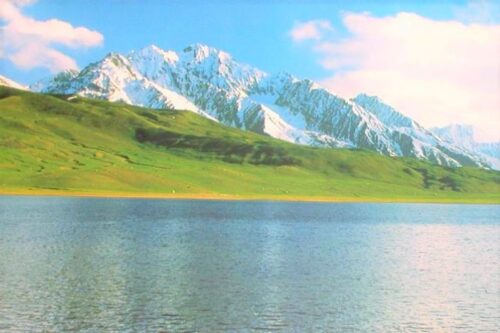
Shandur Pass is a high mountain pass located at an elevation of 3,700 meters (12,139 feet) above sea level in the Hindu Kush mountain range in Pakistan. It connects the Chitral district of Khyber Pakhtunkhwa province with the Gilgit-Baltistan region.
Shandur Pass is known for its beautiful natural scenery, and it is a popular destination for tourists who visit the area to witness the annual Shandur Polo Festival. The festival is held every year in the first week of July, and it features a polo tournament between the teams of Chitral and Gilgit.
The pass is also an important route for the movement of people and goods between Chitral and Gilgit-Baltistan, especially during the summer months when the pass is open. However, due to its high altitude and harsh weather conditions, the pass remains closed during the winter months.
Deosai National Park:
The second highest plateau in the world, Deosai National Park is home to a diverse range of flora and fauna.
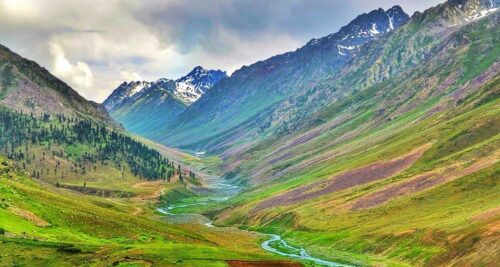
Deosai National Park is a high-altitude national park located in the Skardu District of Gilgit-Baltistan, Pakistan. It covers an area of approximately 3,000 square kilometers and is known for its beautiful scenery, rich wildlife, and unique ecosystem.
The park is situated at an altitude of around 4,000 meters above sea level and is characterized by its rolling hills, grasslands, and alpine meadows. It is home to a variety of wildlife species, including the Himalayan brown bear, snow leopard, ibex, red fox, and several species of birds.
Deosai National Park is also known for its seasonal flowers, which bloom in the summer months and create a vibrant and colorful landscape. The park is also a popular destination for trekkers, hikers, and nature enthusiasts who come to explore its stunning scenery and unique ecosystem.
The park is accessible by road from Skardu, which is the nearest major town. Visitors can also camp within the park, but they are required to obtain a permit from the park authorities. Deosai National Park is a beautiful and unique destination that offers visitors a glimpse into the natural beauty and rich biodiversity of Pakistan.
Chitral:
Located in the northernmost part of Khyber Pakhtunkhwa, Chitral is known for its rugged mountains, scenic valleys, and unique culture.
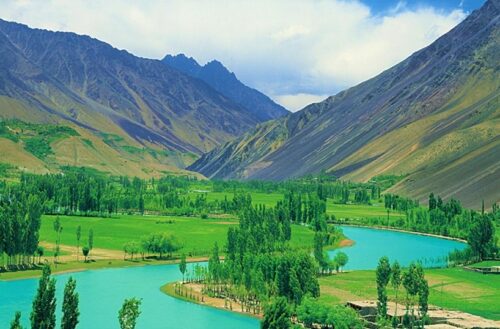
Chitral is a district located in the Khyber Pakhtunkhwa province of Pakistan. It is situated in the northwestern part of the country, bordering Afghanistan to the north and west, the districts of Gilgit-Baltistan to the east, and Swat and Lower Dir to the south. Chitral is known for its stunning natural beauty, including the magnificent Hindu Kush mountain range and the Chitral River that flows through the valley. The district is also home to diverse ethnic groups, including the Kho people, who have a unique culture and language.
Tourism is an important industry in Chitral, with many visitors coming to explore the area’s natural wonders, participate in outdoor activities such as hiking and mountaineering, and experience the local culture and traditions. The town of Chitral itself is also a popular destination, with its bazaar, mosque, and impressive 17th-century fort.
Astore Valley:
Astore Valley is known for its stunning landscapes, including meadows, forests, and glaciers.
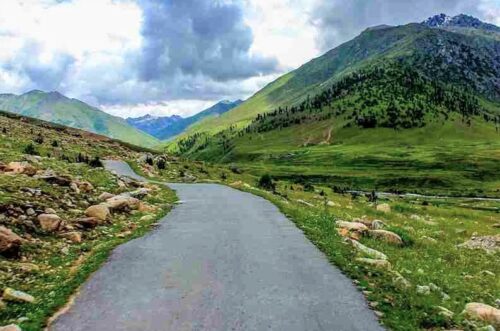
The Astore Valley is a picturesque valley located in the northern areas of Pakistan, in the Gilgit-Baltistan region. It is situated on the western side of the Nanga Parbat massif and is known for its stunning natural beauty and diverse flora and fauna.
Nanga Parbat is one of the highest peaks in the world, standing at 8,126 meters (26,660 feet) above sea level. It is located in the Astore Valley and is a popular destination for mountaineers and trekkers.
The Astore Valley is home to a number of small villages, where the local people lead a simple and traditional way of life. The valley is also known for its unique cultural heritage, which is a blend of Tibetan and Central Asian influences.
Tourists visiting the Astore Valley can enjoy a range of activities, such as trekking, mountaineering, camping, and sightseeing. The valley is accessible by road from Islamabad and Skardu, and there are a number of guesthouses and hotels in the area that cater to tourists.
These are just a few of the many amazing places to visit in the northern areas of Pakistan. The region is full of natural wonders and cultural treasures, and there’s something to suit every type of traveler.


